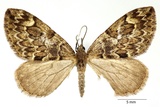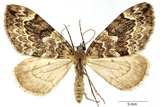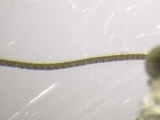Thera variata ([Denis & Schiffermüller], 1775) Species
Last modified: Nov. 6, 2025, 8:01 p.m.
Status is insufficiently known, but it is believed that this is a rare but widespread species in Belgium.
Distribution based on controlled males (saw teeth of the antenna members) or study of the genitalia in females.
Data Deficient due to a lack of sufficient data according to the IUCN Red List category for Flanders 2023.
Details
- Classification
- Family: Geometridae > Subfamily: Larentiinae > Tribus: Cidariini > Genus: Thera > Species: Thera variata
- Vernacular names
- Sparspanner (NL), La Corythée variée (FR), Veränderlicher Nadelholzspanner (DE)
- First mention in Belgium
- De Sélys-Longchamps E. 1844. Énumération des insectes Lépidoptères de la Belgique. — Mémoires de la Société royale des Sciences de Liége 2: 1–35. On page 17.
- Status
-
Native
Distribution
Bionomics
The adults come to light.
No pictures yet!
Flight periods
The adults fly in two generations a year from late April till well in October.
Observed on
- Host plant (species):
- Abies alba
- Host plant (genera):
- Picea
The caterpillar lives primarily on Abies alba, but according to literature also on Picea abies.
No pictures yet!




